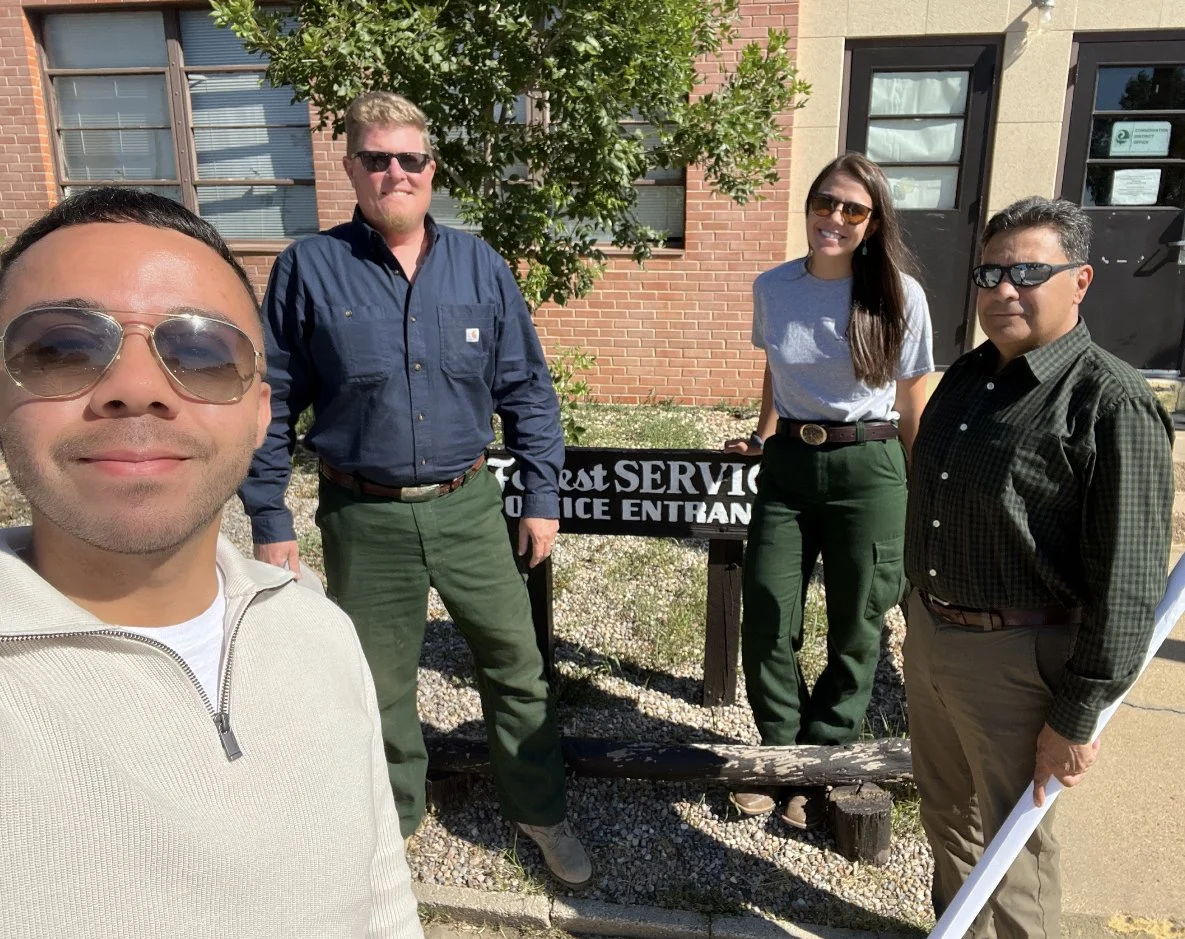Blog: The Aftermath of Historic Wildfires in Northern New Mexico
By: José Ignacio Gaona, HECHO National Policy and Advocacy Manager
Last week I traveled to Northern New Mexico to visit with local Hispanic leaders and Forest Service ground teams to discuss the long-term impacts and recovery efforts taking place after wildfires spread through San Miguel County, Mora County, and Taos County. I was able to get a firsthand look at the aftermath of the historic Hermits Peak / Calf Canyon Fire – the largest wildfire in the state’s history which burned over 341,000 acres from April 6th to June 14th.
After flying into Albuquerque, our New Mexico Senior Field Coordinator, Max Trujillo, and I headed past Santa Fe and up the Rio Grande River. We drove into the burn scar areas from the northern edge and worked our way down until we reached Las Vegas, NM where we would be carrying out our meetings for the week. My first reaction was shock as we drove through the charred hills and valleys. The vantage points from the road allowed us to see layers of hills and valleys all at once, and all of them were burned. Over 500 structures that were scattered amongst the trees a few months ago have been reduced to ash, and sandbags were piled high around the remaining homes.
The fire was its own great disaster, but now the communities of Northern New Mexico are dealing with the constant and prolonged threat of flooding. Each of those hills that burned was part of a watershed that now cannot properly absorb the water from the summer’s monsoon rains. This situation caused by the fires has resulted in this year’s monsoon season bringing with it devastating floods from mere inches of rain in the hills. This rain would be a blessing to the communities under normal circumstances, but the hydrophobic soil conditions and ash pollutants have made it an unusable force for destruction.
The population of Northern New Mexico is overwhelmingly Hispanic with approximately 80% of the population identifying as such. These are people who have rich and deeply rooted history in the United States dating back to colonial times, and even prior to that under Mexican and Spanish governance. The median annual household income in these counties is low – ranging from the high $20,000s to the low $30,000s. In comparison, the population of Los Alamos, where the Cerro Grande Fire in May of 2000 burned 43,000 acres, is approximately 75% Non-Hispanic White with a median household income of over $60,000. In response to that disaster, the federal government came in and paid out $1 billion to compensate those who lost homes.
The people of Northern New Mexico are still waiting for such a recovery response. In our meetings with municipal staff, county leaders, and the Forest Service; it became clear that there is not enough being done by the federal government to aid in comprehensive recovery efforts that will adequately meet the communities’ needs.
These communities deserve more from their federal government, and from all of us with the power to call our representatives and ask them to act. I am proud to say that the HECHO team supports the Hermits Peak Fire Assistance Act which would bring the necessary relief to these communities that they deserve.



